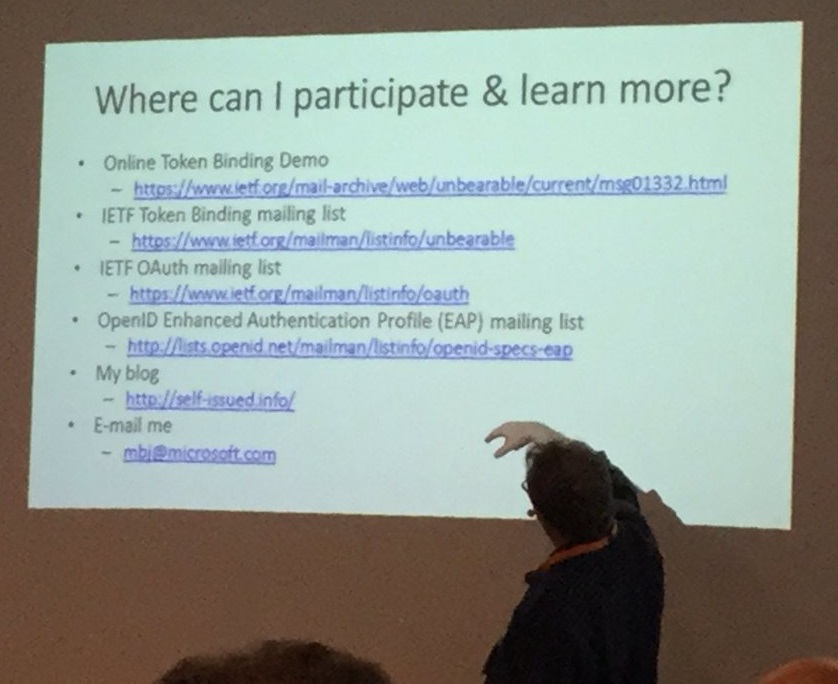 The IETF Token Binding working group has completed the core Token Binding specifications. These new standards are:
The IETF Token Binding working group has completed the core Token Binding specifications. These new standards are:
- RFC 8471: The Token Binding Protocol Version 1.0
- RFC 8472: Transport Layer Security (TLS) Extension for Token Binding Protocol Negotiation
- RFC 8473: Token Binding over HTTP
As Alex Simons recently wrote, it’s time for token binding. Especially now that the core specs are done, now’s the time for platforms and applications to deploy Token Binding. This will enable replacing bearer tokens, which can be stolen and reused, with Token Bound tokens, which are useless if stolen. This is a huge security benefit applicable to any tokens used over TLS, including browser cookies, OAuth access tokens and refresh tokens, and OpenID Connect ID Tokens.
Congratulations especially to the editors Andrei Popov, Dirk Balfanz, Jeff Hodges, Magnus Nyström, and Nick Harper and the chairs John Bradley and Leif Johansson for getting this done!
I likewise look forward to timely completion of related Token Binding specifications, which enable use of Token Binding with TLS 1.3, with OAuth 2.0, and with OpenID Connect.



